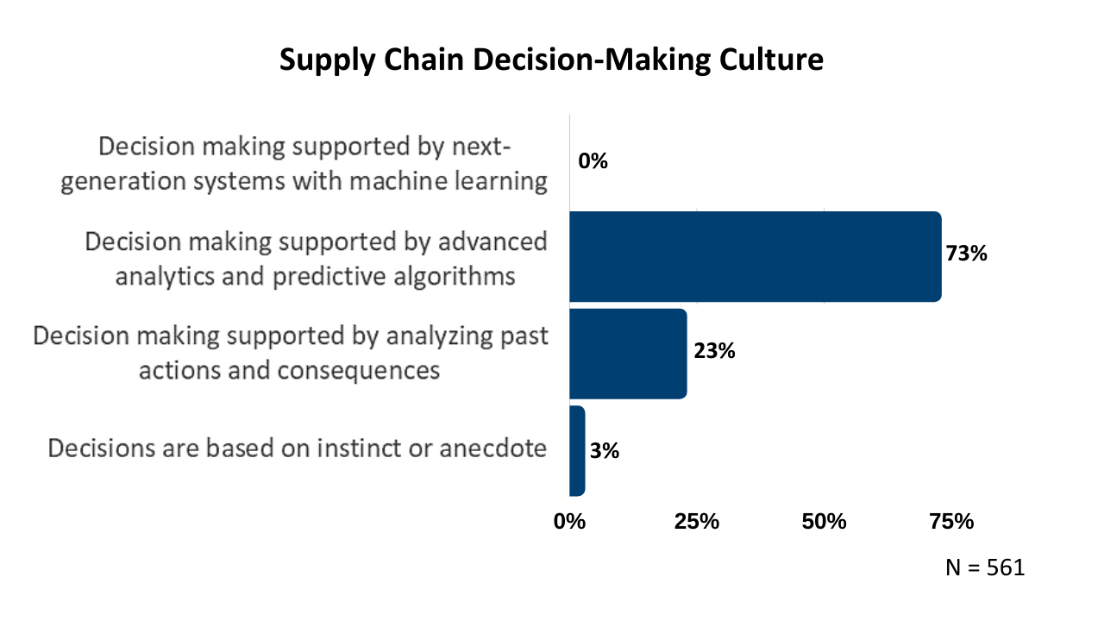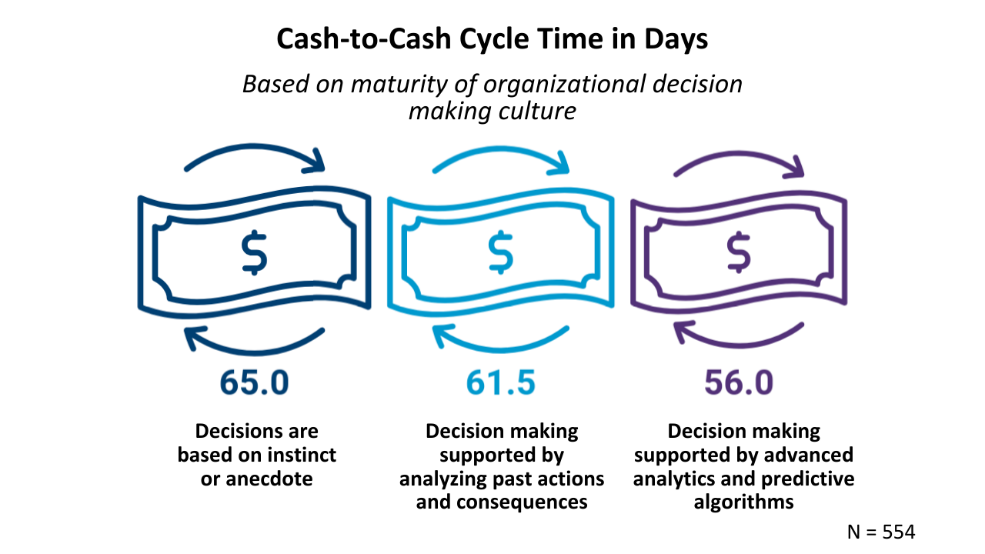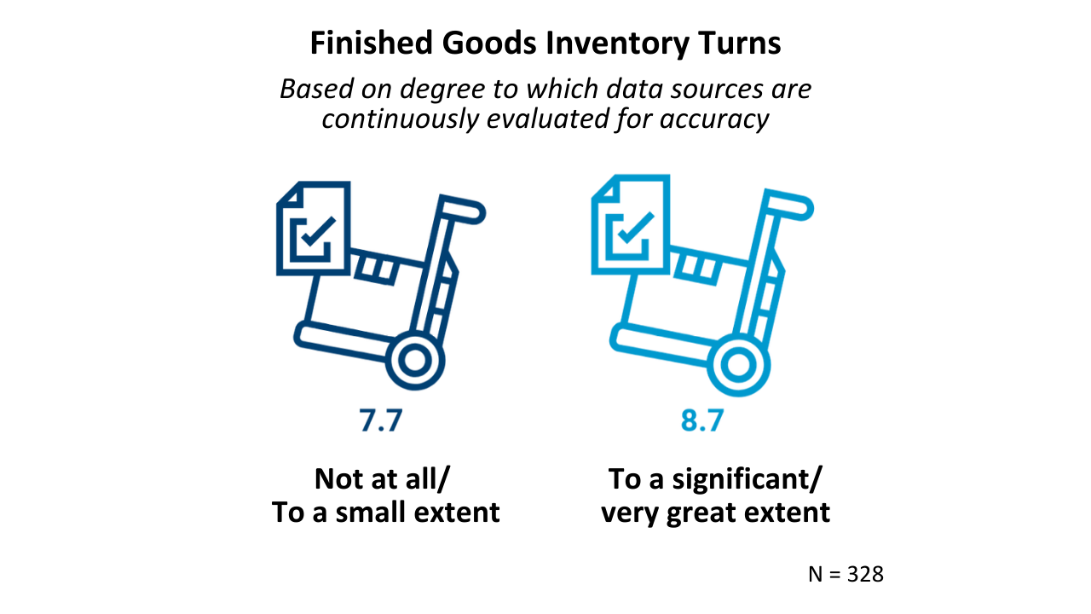As organizations digitize their supply chains, they gain access to a wealth of information — more than any individual can process without technical assistance. Integrated platforms with sophisticated analytics functions provide critical data, often in real time. In supply chain management, analytics are providing valuable business intelligence for forecasting, logistics and inventory optimization, and scenario planning.
Real-time, end-to-end data is not only improving the speed of decision-making but also its quality. Highly data-driven managers are three times more likely to report significant improvements in decision making, compared to those who rely more on intuition.
To unlock these improvements, it’s not enough to simply invest in data and analytics technologies. Supply chain planners need to take a systematic approach to ensuring the supply chain function’s analytical maturity continues to increase.
Mature your supply chain’s decision making
The traditional stages of maturity are:
- Descriptive—The organization integrates systems and platforms and begins digitizing all supply chain transactions in order to create a central data source and single version of truth. Analytics describe current performance.
- Diagnostic—The organization begins performing analysis into problems and drilling down into data. Capabilities may include self-service access to analysis and real-time reporting. Analytics can diagnose root causes.
- Predictive—The organization gains scenario planning capabilities by integrating machine learning and algorithms. Analytics can predict future performance and refine forecasts.
- Prescriptive—The organization’s decision makers and supporting analysts can adeptly leverage available data and technology to find opportunities to optimize the supply chain, which informs supply chain planning.
Through these stages, supply chain planners mature from being analytically aware to analytically astute and then to empowered and finally explorative roles. These levels bring increasing refinement to all aspects of supply chain planning, including network optimization, production scheduling, demand/supply planning, and sales and operations planning, ultimately transforming end-to-end processes through disciplined decision making.
Benefits of advanced decision-making maturity
APQC has gauged the maturity of supply chain decision-making cultures among Open Standards Benchmarking supply chain planning research participants. We’ve found that 23 percent of organizations currently make decisions supported only by past actions and consequences. This is akin to driving a car by looking in the rear-view mirror. Without a more data-driven approach, these organizations will be unable to anticipate changes that deviate from historical patterns.
They are also missing out on opportunities to optimize cash flows and planning processes. Almost three quarters of organizations are using advanced analytics and predictive algorithms to support decision making. Although none have yet achieved next-generation analytical maturity with machine learning in place for decision making, these maturity gains have led to supply chain and business performance gains.

Those supply chain management functions with the most advanced decision support tools have significantly lower cash-to-cash cycle times. In addition, the more mature an organization's supply chain decision-making culture is, the significantly lower the warranty costs (repair and replacement) are as a percentage of sales, dropping from 3.5 percent to 2 percent in the presence of advanced analytics.

APQC has also found that increasing analytical maturity aligns with the degree to which data sources are continuously evaluated for accuracy, thus creating a virtuous cycle of analytical refinement. This evaluation includes ensuring that the entire organization — and not just the supply chain function — uses the same data structures and definitions. When continuous evaluation for accuracy occurs to a significant/very great extent, numerous KPIs improve:
- Perfect order performance improves.
- Cash-to-cash cycle times improve from 61 days to 58 days.
- Customer order cycle times improve from 11 days to 8 days.
- Finished goods inventory turns increase.

Take action to mature your decision making
Better decision making requires a combined effort to invest in technologies and change management. It is important for supply chain planners to coordinate with the organization’s digitization or digital transformation project teams to ensure supply chain planning is a strategic priority for technology investments. Planners should also be involved in defining objectives and setting measurable goals for continued analytical maturity.
For more insight on supply chain planning performance, see APQC’s complimentary executive summary of Supply Chain Planning: Blueprint for Success. The full report outlines a blueprint for success that organizations can follow to help set them ahead of the pack, including a process framework for supply chain planning activities, key performance measures and benchmarks, and performance drivers to improve planning at strategic and tactical levels.
Additional Resources
- Inventory optimization frequently asked questions

